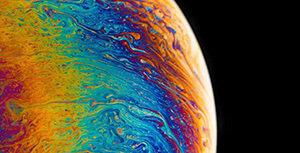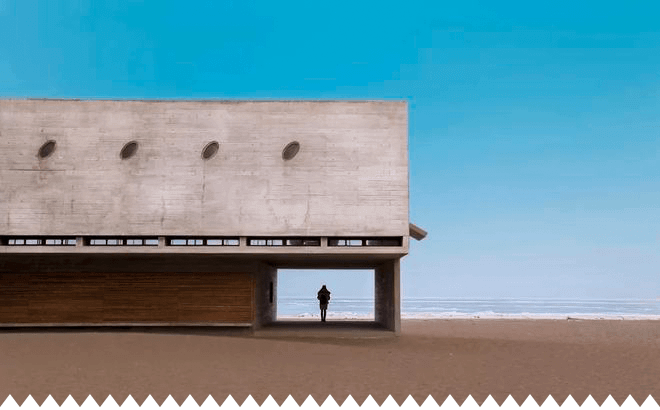📢 转载信息
原文作者:Yue Dong, Lead Researcher
RenderFormer:神经网络如何重塑3D渲染技术
发布于 2025年9月10日
作者:岳东 (Yue Dong), 首席研究员

3D渲染——即将三维模型转换为二维图像的过程——是计算机图形学的基石技术,广泛应用于游戏、电影、虚拟现实和建筑可视化等领域。传统上,这一过程依赖于光线追踪(ray tracing)和光栅化(rasterization)等基于物理的技术,它们通过数学公式和专家设计的模型来模拟光线的行为。
如今,得益于人工智能(AI),特别是神经网络的进步,研究人员正开始用机器学习(ML)方法取代这些传统方法。这一转变催生了一个新兴领域:神经渲染(Neural Rendering)。
神经渲染将深度学习与传统图形技术相结合,使模型能够在不明确建模物理光学的情况下,模拟复杂的光线传输。这种方法具有显著优势:它消除了对手动规则的需求,支持端到端训练,并且可以针对特定任务进行优化。然而,目前大多数神经渲染方法依赖于2D图像输入,缺乏对原始3D几何和材质数据的支持,并且通常需要为每个新场景重新训练——这限制了它们的泛化能力。
RenderFormer:迈向通用神经渲染模型
为了克服这些局限性,微软研究院的研究人员开发了 RenderFormer,一种新的神经架构,旨在仅使用机器学习就能支持全功能的3D渲染——无需传统的图形计算。RenderFormer 是第一个证明神经网络可以学习完整的图形渲染管线(包括对任意3D场景和全局照明的支持)的模型,而无需依赖光线追踪或光栅化。这项工作已被 SIGGRAPH 2025 接受,并且已在 GitHub 上开源(在新窗口中打开)。
架构概览
如图 1 所示,RenderFormer 使用三角形Token(triangle tokens)来表示整个3D场景——每个Token编码空间位置、表面法线以及漫反射颜色、高光颜色和粗糙度等物理材质属性。光照也被建模为三角形Token,其中发射值(emission values)表示强度。

为了描述观看方向,模型使用从光线图(ray map)导出的光束Token(ray bundle tokens)——输出图像中的每个像素对应于这些光线之一。为了提高计算效率,像素被分组为矩形块,同一块中的所有光线一起处理。
模型输出一组Token,这些Token被解码为图像像素,从而在神经网络内部完全完成了渲染过程。
双分支设计:处理与视角无关和与视角相关的效果
RenderFormer 的架构围绕两个 Transformer 构建:一个用于处理与视角无关的特征,另一个用于处理与视角相关的特征。
- 与视角无关的 Transformer:使用三角形Token之间的自注意力(self-attention)机制,捕获与观测角度无关的场景信息,例如阴影和漫反射光传输。
- 与视角相关的 Transformer:通过三角形Token和光束Token之间的交叉注意力(cross-attention)机制,对可见性、反射和高光等依赖于视角的效应进行建模。
额外的图像空间效果,如抗锯齿和屏幕空间反射,则通过光束Token之间的自注意力来处理。
为了验证该架构,团队进行了消融研究和视觉分析,证实了渲染管线中每个组件的重要性。

为了测试与视角无关的 Transformer 的能力,研究人员训练了一个解码器来生成仅漫反射的渲染结果。如图 2 所示的结果表明,模型可以准确地模拟阴影和其他间接光照效果。

通过注意力可视化来评估与视角相关的 Transformer。例如,在图 3 中,注意力图显示茶壶上的一个像素同时关注着它所在的表面三角形和附近的一面墙——这捕获了镜面反射的效果。这些可视化还显示了材质变化如何影响反射的清晰度和强度。

训练方法和数据集设计
RenderFormer 使用 Objaverse 数据集进行训练,该数据集包含超过 80 万个带注释的 3D 对象,旨在推动 3D 建模、计算机视觉及相关领域的研究。研究人员设计了四种场景模板,每个模板填充 1 到 3 个随机选择的对象和材质。场景使用 Blender 的 Cycles 渲染器,在不同的光照条件和摄像机角度下以高动态范围(HDR)渲染。
基础模型包含 2.05 亿个参数,使用 AdamW 优化器分两个阶段进行训练:
- 256×256 分辨率,最多 1,536 个三角形:训练 500,000 步
- 512×512 分辨率,最多 4,096 个三角形:训练 100,000 步
该模型支持任意基于三角形的输入,并且能很好地泛化到复杂的现实场景。如图 4 所示,它能够准确地再现阴影、漫反射着色和镜面高光。

由于 RenderFormer 能够对视角变化和场景动态进行建模,它也可以通过渲染单个帧来生成连续视频。
展望:机遇与挑战
RenderFormer 代表了神经渲染领域的一个重要飞跃。它证明了深度学习可以复制甚至可能取代传统的渲染管线,支持任意3D输入和逼真的全局照明——所有这些都无需任何手工编写的图形计算。
然而,关键的挑战依然存在。扩展到具有复杂几何、先进材质和多样化光照条件的更大、更复杂的场景需要进一步的研究。尽管如此,这种基于 Transformer 的架构为未来与更广泛的 AI 系统(包括视频生成、图像合成、机器人技术和具身智能)的集成提供了坚实的基础。
研究人员希望 RenderFormer 能够成为未来图形学和人工智能领域突破的基石,为视觉计算和智能环境开启新的可能性。
在新窗口中打开
🚀 想要体验更好更全面的AI调用?
欢迎使用青云聚合API,约为官网价格的十分之一,支持300+全球最新模型,以及全球各种生图生视频模型,无需翻墙高速稳定,小白也可以简单操作。
青云聚合API官网https://api.qingyuntop.top
支持全球最新300+模型:https://api.qingyuntop.top/pricing
详细的调用教程及文档:https://api.qingyuntop.top/about




评论区